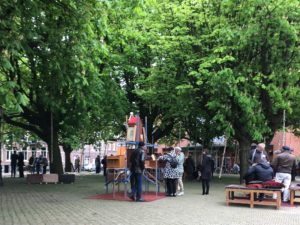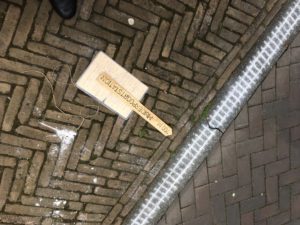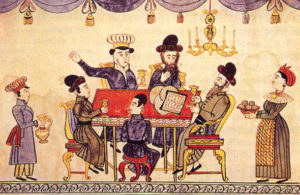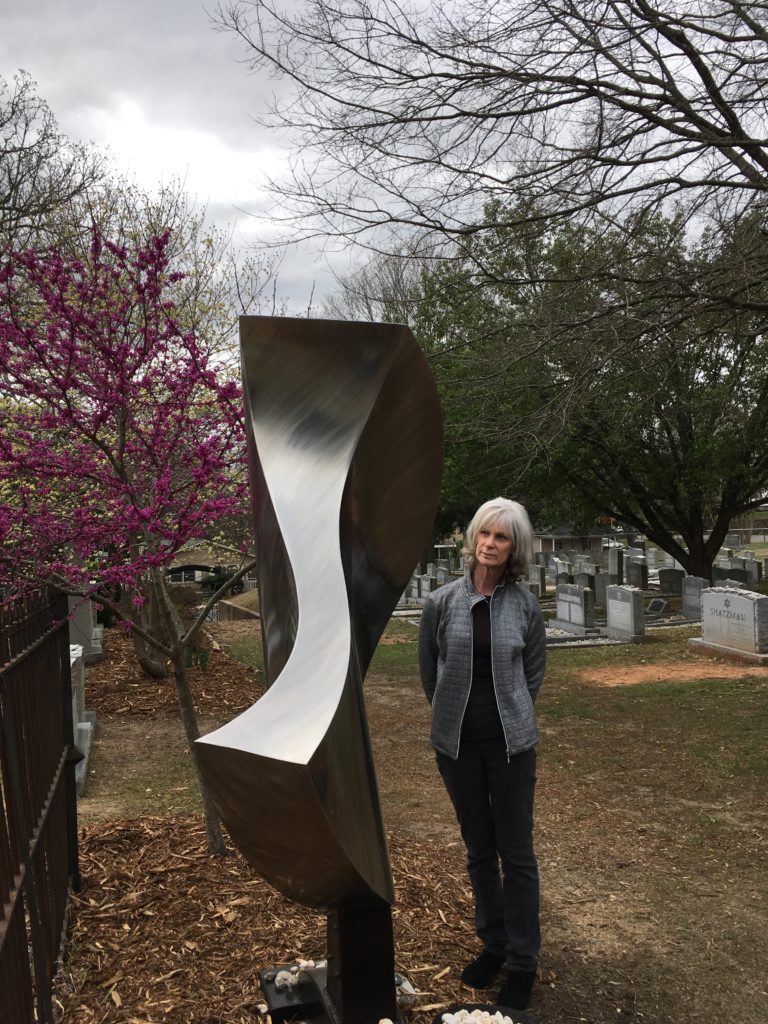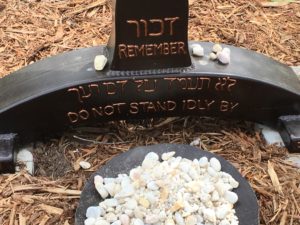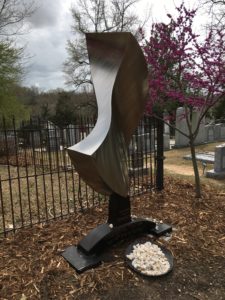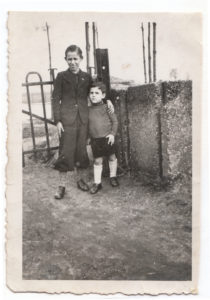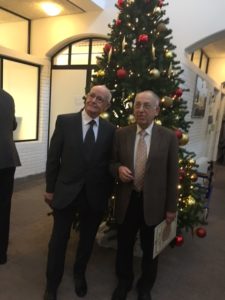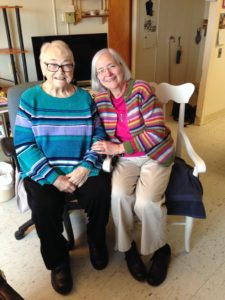
March 28, 2016
My friend KK Wilder would have been 75 years old on April 20, 2017. We would have eaten gluten free cake, and cackled at her cheating death again. Instead, I’m writing about her, which is just what she would have wanted.
KK was lots of fun as well as being what the Reader’s Digest would call an inspiration: ebullient, even giggly at times, always noticing the beautiful and the absurd. Still, KK never suffered fools gladly. “When I teach grammar and composition, I just grab a copy of the Burlington Free Press and take it with me to class. It doesn’t matter what kind of error I’m looking for — subject and predicate disagreement, split infinitive, misplaced modifier – I can always find it by page 3 at the very most.” She loved to laugh, even up to the end, and I was always disappointingly serious and too highbrow for some of her favorite indulgences: movies, bad jokes, Disney characters and cats. That left us everything else: nature, books, writing, and food.
When we first met, KK was the night manager at an old age home, a job that enabled her to do the writing, editing and teaching which were her first loves. Our mutual pleasure in nature’s beauty and gardens drew us together immediately, especially since I lived right across the street. Unlike most of my friends, KK never thought I was too excited if I squealed over an old fashioned rose or a 200 year old maple tree. We effused together.
When we began to talk about writing, I was still at the earliest stages of thinking that perhaps, maybe, one day, I might become a creative writer. I was already a decent writer in my professional world, and my friends loved my travel letters sent from afar and my poems. I had hooked up with my lifetime teacher Deena Metzger, who was already pulling me toward the vision of “writing for your life.” But that beacon shone on me from the distant future, and Deena was in California. I needed someone to guide my steps there and then, in Vermont.
KK was a highly respected local writer and writing teacher, best known for her monthly columns in Vermont Maturity and The Independent (from the Vermont Center for Independent Living). Generally on the themes of living with aging and disability – subjects she knew all too well – they were full of wisdom but never pretentious or preachy. KK had the voice of a good neighbor who knows a lot but never bosses you around. When she interviewed people for the airport magazine, she always chose the pithiest and most telling quotes. People always opened up to her. KK was active in the League of Vermont Writers, and loved the Pen Women.
I’d almost never dared to put my creative work into the public eye. When I timidly asked KK if she’d be my writing coach, she was delighted and plunge right in. Within a year or so, at her insistence, I’d submitted poems to a contest and won publication in the Vermont Voices anthology. KK reminded me of what books have meant in my life, especially as a lonely only child: they kept me company, taught me, expanded my world and pushed me to be a kinder and more generous person. “You owe the world a book of your own,” she said.
“I’ve already written one!” I protested. “My study of women MBAs in 1987.”
“That’s good and you can be proud of that. But I mean a book from your heart. Literature, Mary. Literature!”
I shrank away. Poems in a journal here or there, OK. Maybe an essay or two. But a whole book, much less literature?
When my skills had improved sufficiently, KK fired me. “You need someone better than me now. Who was that woman in California?” I don’t remember if this was before or after KK and her friend Michele Patenaude started a writing group and invited me to join. It was a tight ship, and is still going 15 years later without their leadership. Everyone had to be on time, to have read whatever we were critiquing at least once, and to offer balanced, thoughtful comments. KK expected Commitment, and she was as sharp as a 19th century schoolmistress if she saw it waver. Her students at Community College of Vermont probably felt much the same.
KK had the satisfaction of seeing her faith in my talent justified. In 2001, I returned from six months in Amsterdam obsessed with writing about the Holocaust and resistance there. I’d even written a fistful of poems. At last, I was gripped by a subject that would not let me go, and it was complicated and demanding enough to work on for years or decades ahead.
KK wasn’t gracious about it. She crowed. She was a deeply sensitive person, but she didn’t come from a home where tact or restart were valued. “I told you you were going to be a writer,” she said, smiling a superior smile. When I returned from another visit the next year, we had lived in an apartment where Jewish people had been hidden overhead in the attic. “I keep seeing these people! They’re haunting me. I’ve started writing about them, just a flash here and there.”
“What are you going to call the book?” KK asked. I felt like a woman with a new boyfriend who’s being asked what to name the grandchildren.
For the next 13 years, KK kept track of the progress of my novel, as well as having good times with me. I loved visiting her raised plot in the community garden she coordinated, going out to lunch at her favorite gluten free place, walking and scooting along the bike path by Lake Champlain. People stopped us every few feet to talk with KK. Even so, many of our conversations were profound, usually at her home by the million dollar view. Toward the end, she’d raise the shade even though it hurt her eyes. “For you,” she said, like an empress conferring a great favor, and she was.
In our best times, KK bared her heart – whether the loss of yet another friend, the latest disheartening medical news about her many conditions, her decision to stop doing something she loved before she couldn’t do it any more (i.e. cooking, driving, writing, typing), or a painful incident she was trying to understand rather than close up. I listened and empathized and occasionally suggested, and she did the same for me. What she gave me was neither more nor less than an instruction manual about how to live with increasing disability—something every aging person must do to one degree or another.
Everything I’d learned from KK served me well when I had a disastrous accident in 2010 (on her birthday), and I spent months in the hospital and rehab, then faced several years of debilitating illness and pain. For the first time, I had a whiff of what KK had suffered so many times, not just the physical misery but the wracking uncertainty about the future. The worst pain I’d ever felt before my accident was so mild compared to the real thing, and no matter how much it hurt, KK had been there before. I couldn’t believe the sheer grit it took to keep fighting. The profound exhaustion. To think I used to feel hurt when KK occasionally cancelled at the last minute because she wasn’t up to a visit! I had no idea. Hardest of all was the battle to maintain my good spirits through all the bad luck I had – even knowing that, if I could beat the hospital-bred infection that was trying to kill me, I’d get better. Never the same, but better. KK, in contrast, faced a downward slope, even if there were occasional bumps up before another plunge. Her life had already been long given her many conditions. Improvement for her was temporary at best.
When KK visited me in Rehab, she never stayed long. She always touched me gently. She asked for no conversation, but sometimes read a poem. She knew what the pain was like, and while (unlike me) she was confident I’d get through it, she knew it was hell right then. If a few days passed when she couldn’t come, she sent a note, usually with flowers on it and a few words. That taught me how to help someone who is truly ill.
Once I was out of Rehab and able to write again, my commitment to finish my novel was absolute. KK cheered me on as the story gelled from years of research, and became the tale of a young Jewish woman who risks her life in the anti-Nazi underground. She cross examined me about my progress whenever we met. During that time, she arranged for her mother – once an alcoholic with uncontrolled rages – to live down the hall from her. KK took care of her until she died, spending each evening with her. The generosity in that was beyond description.
Over the years, I began to see KK more clearly: the chubby toddler who could still run, the twelve year old who couldn’t because of heart and lung problems, the teenager suffering through her first surgery. Then the hippie Mother Earth phase when she kept Rhode Island Barred Chickens with her husband on a fabulous estate that she and her husband cared for. Slowly, the shadows filled in: the Yankee mother who was both a gardener and an alcoholic with a mean streak like the white stripe down a skunk’s back. KK inherited this, and at times hurt almost everyone who loved her. The husband she extolled as so loving and sexy also turned out to be an alcoholic. I don’t know who left whom, but it was one of the great wounds of her life regardless. That dashing figure, her father, the Greek immigrant chef? It turned out that he was also a gambler, so the family never knew whether they’d eat lamb or beans, in a well appointed house or a chilly hovel. KK got used to those extremes, and it wasn’t bad training for her later life. But even she couldn’t forgive what happened to her grandparents in Greece, starved to death by the Nazis.
My respect for her, already great, increased as I knew her better. I especially admired her choice to face her life with gratitude, generally good humor, an appreciation of the beauty of life and the goodness in people. She had her discouraged or mean-spirited moments like the rest of us, but so many fewer than her situation warranted.
When I first knew KK as a respected and trenchant local writer, she was already walking with canes indoors and had serious heart and lung problems among many others. She was so determined and full of fun and life that it seemed as if her illnesses could never stop her. Until I was close enough to accompany her to the ER a few times, I didn’t realize what she was up against. Even so, the “comeback kid” kept resurging, and handling her progressive difficulties with remarkable grace – until.
KK was driving us home from the Farmer’s Market in Burlington’s New North End one summer afternoon, but something wasn’t right. Normally an excellent driver, she was wavering within the lane. I asked her if something was wrong. She screwed up her face and said “Well, uh, no, uh, well, not really.” She had never been so incoherent. I begged her to let me drive her to the doctor or the ER, but she refused, and I couldn’t persuade her. The best she offered was a promise to call the doctor when she got home, and when I called to remind her, she hadn’t done it. This was the first of the small strokes which undermined her cognitive abilities, her profession, and many of her greatest pleasures in life. Now that I know more about stroke, I’d be more assertive, but my “taking over” was already a bone of contention. Like me, KK hated to be told what to do.
KK and I had a close but not easy relationship. Among other issues, I had a more privileged life than hers in every way, and sometimes it rankled. I had a devoted partner in whom I delighted – KK’s fondest wish, never to be gratified. I had few money worries not of my own neurotic making. I traveled constantly for both work and pleasure, which she would have loved to do. It took KK five years to save up for a trip to Disney World, something that underscored our differences in both economics and taste. The latter we could at least joke about. KK gave me a different hideous ornament for my Christmas tree every year, and we cackled as we put them up. While she still had good fine motor control, KK always helped me pack away my own collection – the tasteful ones I’d inherited and purchased – and hers.
Every now and then, KK bullied me, usually because her medications were off. I learned to let it blow over rather than retaliate, but it always hurt. Perhaps drawing on her experience with her rejecting and abusive mother, KK would blow some imagined insult out of proportion and roar at me. My explanations were never sufficient. A few weeks or months passed, and then it usually fell to a kind mutual friend to patch things up. Only very rarely could KK apologize. It was part of the toughness that got her through. When I said I was sorry, she had trouble believing I meant it. She just decided to overlook whatever I’d done, because she knew I loved her.
A visit to KK meant going to other worlds. First, that of subsidized housing, with cinder block walls in the lobby and notices not to do this or that in the elevator. Down the well-polished top floor corridor was KK’s door, the last on the right, with a sign that welcomed you or told you to go away during a nap.
Before she gave many of her treasures to friends – so the job of cleaning out when she died or moved would be easier – KK’s place was an encyclopedia of her life. a photo of her young, slender self next to her handsome but alcoholic husband. The dainty forget me not china which had been her Mom’s. Books that included her sharp essays or lavish poems. That silly cat clock that moved its eyes back and forth as it ticked – and a fine antique wall clock that never kept time because KK couldn’t afford to have it fixed.
In response to my knock, KK would bellow “Come in!” like an admiral on the bridge of a ship. Soon I’d be in her large presence – her big grin, her wacky earrings and brightly colored clothes blazing over her queen-sized body. Beyond her was a huge picture window with the million dollar view of Lake Champlain and the Adirondacks. Houseplants filled the window sill: both gifts and the problem children of all KK’s friends, which always took a turn for the better. I gave her an ailing prickly cactus with a single phallic stem. She promptly called it “Bill Clinton.” But what KK loved best were flowers, and we all brought them, in or out of season, the brighter the better. Her favorite was grandmother’s fragrant phlox, until it was something else.
Old world hospitality was always part of a visit to KK: at the very least a cup of the tea she kept specially in the cabinet with me in mind, the water always already boiling when I arrived. There were almost always gluten-free cookies and a treasured cantaloupe or peach in season. If we were having a meal, lunch was laid out as at the Ritz, with every piece of dinnerware or china or glassware in its place. When KK’s garden was producing – as it invariably did, more and better than almost anyone else’s – the salads were the best in the land.
It was hard to get KK to accept gifts of any kind, although her response when she got past her initial reluctance was always effusive. Because she and I were both Christmas enthusiasts, one year I persuaded her to let me take her to the local live theater for a holiday performance. I’ll always remember KK’s stuffing me beforehand with her father’s avgolemono soup, moussaka and Greek salad and baklava. That was her idea of a proper meal.
KK had more diagnoses than a dog has fleas. But she couldn’t and wouldn’t let that stop her until remarkably close to the end, despite congestive heart failure, lung problems, kidney failure, diabetes, arthritis, neuropathy that prevented her taking more than a few steps on her own, and finally strokes and cancer as well. I have probably forgotten some of the disabilities and chronic illnesses that KK came to terms with over the years. That was her philosophy. She did not accept; she came to terms. If she’d had money to burn, I would have admired KK for the productive, satisfying life she constructed in spite of everything. That she did so on a bare bones budget was truly an achievement.
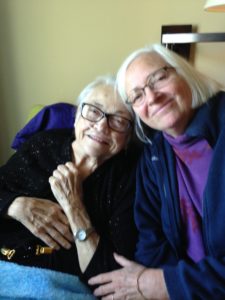
October 11, 2016
I watched KK let go of so much of what she loved both to do and to have, because she was realistic about her predicament and prospects. She wanted to make those decisions for herself preventively and proactively rather than having them inflicted on her. Before we met, she mostly gave up walking outdoors and started using a scooter, which was a terrific liberation for her. Although KK adored cars, she finally relinquished not only driving but also the vehicle a friend had passed on to her. She realized that far too much of her energy was spent cooking and doing household duties, so she couldn’t do her work of writing and editing. She asked for the help she was more than qualified to receive. Far past the point when most people would have applied for Social Security Disability, she finally did. Over the years, KK stopped going out in the evening with very rare exceptions. She gave up her Saturday trips to the Farmer’s Market where she knew everyone and everyone knew her. She was heartbroken when it was too muggy and hot for her to attend our wedding safely, and sent a cartoon of the Statue of Liberty kissing the figure of Justice that made everyone laugh.
KK began giving away her possessions, because she foresaw that her time at home was shrinking. Even worse, after her strokes, she resigned from the writing group she had co-founded, and wrote farewell columns to her fans at Vermont Maturity and The Independent while she still could. The year before she died, however, KK was in fighting form after a major fracture in her leg. Even at a rehab facility with poor food and marginal care, she threw herself into physical, occupational and even speech therapy, and came back stronger. The therapists were stunned at her motivation.
Very occasionally, I’d find KK down in the dumps, as when she finally got the one disease of which she’d always said brightly, “At least I don’t have cancer.” The deaths of her two brothers hit her very hard, especially because the relationships had been difficult. The loss of friends was never easy. When the medical system had been egregious to her or her friends, KK usually railed, but sometimes it wore her down.
Overall, though, KK’s ability to continue to enjoy life no matter what was jaw-dropping. She relished every sunset out her million dollar window. When an eye condition meant black shades over the panes, she could remember and smile. As her once exceptional way with words diminished and reading even large print was too hard, she became even more visual. A few flowers were an unending source of joy, especially if fragrant and from a friend’s garden. She loved to listen to the jazz and blues music she sang when she had breath for it, both on local radio and in live performances, but she also enjoyed classical music.
Although KK loved her quiet Sundays when no one came in to help with personal care and household tasks, she made relationships with almost everyone who came to work with her. It kept her young, she said. As much as she appreciated assistance, occasionally the agency sent her someone who was more effort than help. Always a taskmistress (albeit a benevolent one), KK rolled her eyes when I once asked how it was going with a new aide. “Sweet as can be and dumb as I post. I know I shouldn’t say that,” she replied.
The workers often had their own life issues – even bipolar disorder in one case – and KK was a pro at advocacy until her last few years, so she advised them, and made lifelong friends with some. One exceptional person helped KK make and enforce even the most sensitive decisions. KK asked the aide to tell me, in her presence, that the time would soon come for her to move to Respite House. She couldn’t find the words herself.
At the very end, KK floated in and out of awareness, but she still felt joy at the “Mary flowers” I’d brought from my garden, and the poems I read to her. She smiled when I put a copy of my newly published book on the shelf at her bedside, but she was too weak to say, “I told you so.”
My favorite thing of KK’s was a yellowed piece of embroidery which read “The path to the house of a friend is never long.” She gave it to her best friend, whom she’d known since she was twenty. But I can’t complain. Over her mother’s end table in my living room hangs another embroidery: “Friendship has no name but love.”
 When I was in college, I learned that The Merchant of Venice was the anti-Semitic play where the avaricious Jew Shylock demands his pound of flesh from the worthy Christian merchant. Fortunately, the new production at Will Geer’s Theatricum Botanicum offered a chillingly contemporary interpretation instead. It’s probably much closer to Shakespeare’s intention.
When I was in college, I learned that The Merchant of Venice was the anti-Semitic play where the avaricious Jew Shylock demands his pound of flesh from the worthy Christian merchant. Fortunately, the new production at Will Geer’s Theatricum Botanicum offered a chillingly contemporary interpretation instead. It’s probably much closer to Shakespeare’s intention.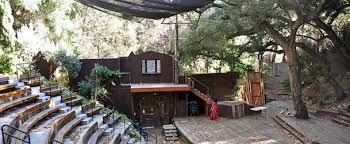

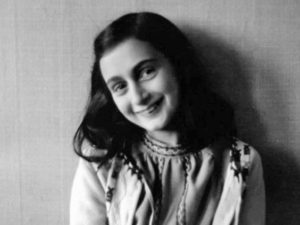
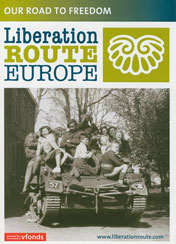 What a joy it was to meet Victoria van Krieken, the vibrant director of the
What a joy it was to meet Victoria van Krieken, the vibrant director of the 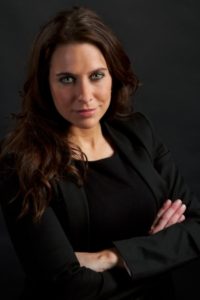
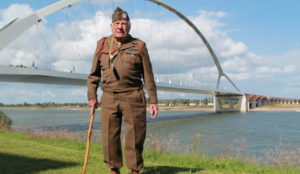 it is the last time “we will be able to honor the veterans in their presence.” Even if a few live until the 80th anniversary, there is no guarantee that they will be in a condition to participate. So this is the last opportunity for a certain kind of connection with the past – and to assure the veterans that future generations will continue to walk in their footsteps. Three big projects will support the anniversary effort: a multifaceted commemoration with an emphasis on involving people across countries, occupations and generations; an international awareness campaign; and completion of the Trail itself. How wonderful to imagine what this dynamic woman and her young staff will come up with to bring the past into the future! It is a “modern pilgrimage” as van Krieken puts it. People from every country will be welcome either to participate in person or in electronic ways that we can only begin to conceive of now. In either case, we won’t forget.
it is the last time “we will be able to honor the veterans in their presence.” Even if a few live until the 80th anniversary, there is no guarantee that they will be in a condition to participate. So this is the last opportunity for a certain kind of connection with the past – and to assure the veterans that future generations will continue to walk in their footsteps. Three big projects will support the anniversary effort: a multifaceted commemoration with an emphasis on involving people across countries, occupations and generations; an international awareness campaign; and completion of the Trail itself. How wonderful to imagine what this dynamic woman and her young staff will come up with to bring the past into the future! It is a “modern pilgrimage” as van Krieken puts it. People from every country will be welcome either to participate in person or in electronic ways that we can only begin to conceive of now. In either case, we won’t forget.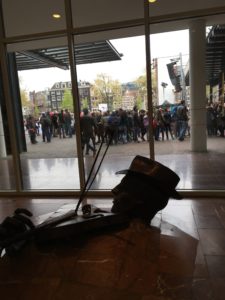

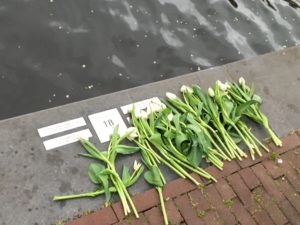 We crossed the bridge and turned right. Eerily, the warning sounds that the bridge was about to be lifted bleeted loudly. This is the same bridge the Nazis raised to isolate the Jonas Daniel Meijerplein for the first roundup. Walking along the Nieuwe Keizersgracht, a small residential canal, we saw the markers at our feet which show the name and age of each person who used to live in the house opposite us. All had been rounded up and murdered. Every few feet, someone quietly read the names.
We crossed the bridge and turned right. Eerily, the warning sounds that the bridge was about to be lifted bleeted loudly. This is the same bridge the Nazis raised to isolate the Jonas Daniel Meijerplein for the first roundup. Walking along the Nieuwe Keizersgracht, a small residential canal, we saw the markers at our feet which show the name and age of each person who used to live in the house opposite us. All had been rounded up and murdered. Every few feet, someone quietly read the names. The clomping of the horses’ feet and the drums sounded louder, and those still reading the plaques could see the crowd advance over the bridge. We passed near the Carré Theater where numberless Jewish people performed, and crossed The Skinny Bridge, looking back up the River to the plaza where we had begun. It was once a medieval Jewish neighborhood, torn down over great protest to build the City Hall/Opera House.
The clomping of the horses’ feet and the drums sounded louder, and those still reading the plaques could see the crowd advance over the bridge. We passed near the Carré Theater where numberless Jewish people performed, and crossed The Skinny Bridge, looking back up the River to the plaza where we had begun. It was once a medieval Jewish neighborhood, torn down over great protest to build the City Hall/Opera House.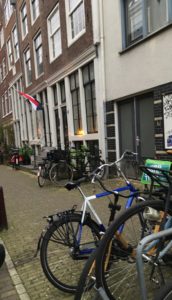 nutes to acknowledge us, but few stayed out. It was too cold. The flags were all at half mast.
nutes to acknowledge us, but few stayed out. It was too cold. The flags were all at half mast.
